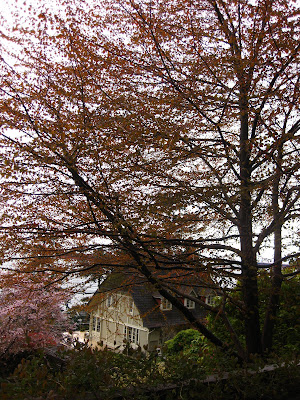Okay, Mr. Nassichuck: this one's for you...since you seem to share my incredulity that this stuff is edible.

I sort of followed the recipe at http://tofufortwo.net/2008/05/21/goutweed-soup, which involved frying two onions & garlic, adding a generous slosh of white wine, two cups of veggie broth (used the Harvest Sun organic veg bouillon cubes), and two packed cups of GOUTWEED straight from the weedy patches out in my garden, then briefly bringing it to a boil, adding a half cup of bread crumbs, and blending it up in the blender.
Voila--tasty, with no weediness whatsoever. I gather that you can just use goutweed as a replacement for spinach/kale, as I also saw an omelette recipe, and I don't notice any strong flavour that requires careful balancing. But then, it's hard to compete with garlic and onions... I guess hardcore wild-crafters out there would do a salad, straight-up.
...I just did more online research, because I had the fleeting thought that, despite its edible-ness, goutweed might have no nutritional value whatsoever...and I just found a very cool website called Sacred Earth: Ethnobotany and Ecotravel with a goutweed discussion at http://www.sacredearth.com/ethnobotany/foraging/Goutweed.php Woo-hoo! There are more recipes on this page. So apparently, "it is a good source of vitamin C and A as well as minerals such as iron and manganese" etc. etc.
Eat your soup kids!
















































